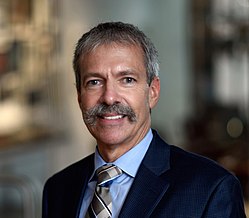Wayne Goodman | |
|---|---|
 American psychiatrist and researcher | |
| Alma mater | Columbia University Boston University School of Medicine Yale School of Medicine |
| Known for | Obsessive Compulsive Disorder, Yale-Brown Obsessive Compulsive Scale International OCD Foundation, Deep Brain Stimulation |
| Scientific career | |
| Fields | Psychiatry, Neurology |
| Institutions | Baylor College of Medicine, Icahn School of Medicine at Mount Sinai |
Wayne Goodman is an American psychiatrist and researcher who specializes in Obsessive-Compulsive Disorder (OCD). He is the principal developer, along with his colleagues, of the Yale-Brown Obsessive Compulsive Scale (Y-BOCS). [1]
Contents
- Biography
- Major accomplishments in OCD
- Yale-Brown Obsessive Compulsive Scale (Y-BOCS)
- Selective serotonin reuptake inhibitors
- International OCD Foundation
- Deep brain stimulation
- Service with the Food and Drug Administration
- References
In 2016, Goodman was appointed the D.C and Irene Ellwood Professor and chair of the Menninger Department of Psychiatry and Behavioral Sciences at Baylor College of Medicine. He is also an adjunct professor in the Department of Electrical and Computer Engineering at Rice University. [2]